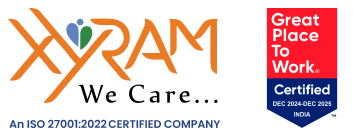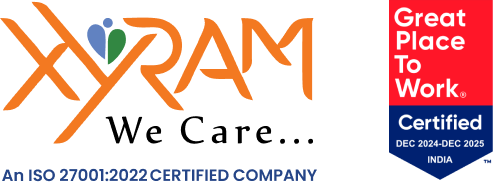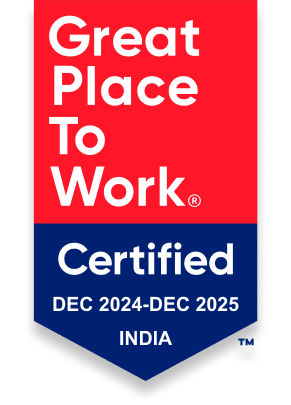Single Blog
- Home
- EHR Integration: The Key to Streamlining Healthcare Operations
Quick Links
Help & support
Site Information
GSTIN: 29AAACX1461F1ZE
CIN: U72200KA2013PTC071033
Service Inquiries
Location
Bengaluru
No. 96, J. B. Arcade RBI East Layout Wilson Garden Housing Society Kothanur J. P. Nagar 7th Phase, Bengaluru – 560 078 Karnataka, India
Hyderabad
Ground floor, DSL Abacus IT Park, Survey Colony, Industrial Development Area, Secunderabad, Telangana, Hyderabad – 500039
USA
Xyram Software Solutions LLC,
8865 Stanford Blvd, Columbia,
MD-21045, USA




EHR Integration: The Key to Streamlining Healthcare Operations
Juggling patient data across multiple systems can be a headache. With so much information floating around, healthcare providers often find themselves lost in a sea of data silos, which leads to inefficient healthcare operations. But it’s not just about operational efficiency anymore.
The release of the ONC’s Cures Act Final Rule calls for a patient-centric ecosystem, and Value-Based Care leads the charge. In such an industry climate, EHR integration is the key to improving the quality of care and patient engagement. In this blog, we dive into how EHR integration solutions can spearhead the change in the healthcare technological ecosystem.
Understanding the EHR Integration Barrier
A modernized EHR offers numerous advantages, including improved patient care through real-time data access and reduced medical errors. It streamlines workflows, accelerates documentation, and enhances billing and coding processes. Additionally, modern EHRs prioritize security and privacy, protecting sensitive patient information. Ultimately, a modernized EHR is designed to lead to better patient outcomes, increased operational efficiency, and improved financial performance for healthcare organizations.
But the reality is the journey toward seamless EHR integration is fraught with challenges that can significantly hinder its potential. One major hurdle is the lack of standardized data formats and exchange protocols, making it difficult for different EHR systems to communicate and share information effectively. Additionally, inconsistent data entry practices and data quality issues can lead to inaccuracies and inefficiencies. Here’s a closer look at some of the primary challenges hampering EHR integration:
Compliance Costs:
Adhering to regulatory requirements can be a significant financial burden for healthcare organizations. There is a wide variety of direct and indirect costs involved, each one of them requiring an investment. From regulatory fees to staff training to completing the regulatory compliance requirements for using EHR applications, costs escalate significantly, which makes stakeholders resistant to change and hampers the transformative potential of EHR integration in enhancing the quality of healthcare operations.
Data Security and Privacy:
Cybersecurity is a major hurdle with EHR integration. With healthcare data being an attractive target for hackers, it’s crucial to safeguard patient information. Strong encryption, multi-factor authentication, and strict adherence to regulations like HIPAA are essential. Regular security audits and employee training are also key to keeping patient data confidential. It’s a balancing act between innovation and security, but the stakes are high.
Compatibility With Legacy Healthcare Applications:
Older systems can be a roadblock to EHR integration, creating data silos and hindering the interoperability of healthcare applications. To bridge this gap, healthcare organizations can leverage middleware solutions, APIs, and industry standards like HL7 and FHIR. These tools can facilitate seamless data exchange between old and new systems, improving efficiency and patient care.
Costs and Training:
EHR systems can be costly, especially for smaller healthcare facilities, with expenses extending beyond software to include upgrades and training. Financial planning and focusing on long-term savings through improved efficiency can justify the investment. Proper training minimizes workflow disruptions.
Data Quality and Consistency:
Data quality and consistency are critical factors in successful EHR integration. Inconsistent data entry practices, missing or inaccurate information, and varying data formats can hinder interoperability and compromise the accuracy of patient records. Ensuring data quality involves implementing standardized data entry protocols, conducting regular data audits, and using data cleaning and validation tools. By addressing these issues, healthcare organizations can improve the reliability of patient information and enhance the effectiveness of EHR systems.
The Technological Requirements for Successful EHR Integration in 2024
Healthcare facilities must view EHR integration as a comprehensive strategy that goes beyond simply implementing a new EHR system. It’s about creating a cohesive healthcare IT ecosystem where various applications work seamlessly together to improve patient care and operational efficiency. Hence a successful EHR integration project can literally be the key to streamlining a care facility’s operations.
Here are technologies healthcare facilities need to optimize their EHR platform and to derive the most out of it:
Clinical Decision Support (CDS) Integration
CDS systems empower clinicians with real-time, patient-specific recommendations based on EHR data, leading to improved decision-making, standardized care delivery, and, ultimately, better patient outcomes. By providing evidence-based guidelines and reducing variability in treatment plans, CDS systems contribute to enhanced patient safety and quality of care.
Telehealth Integration
Integrating telehealth features into EHR systems allows healthcare providers to offer remote consultations, monitor patients remotely, and maintain patient privacy through secure communication channels. This enables timely care delivery, especially for patients in remote or underserved areas.
Medical Billing Integration
Integrating medical billing software with EHR systems streamlines administrative processes, reduces billing errors, and accelerates reimbursement cycles. This integration ensures accurate claims, improves financial performance, and ultimately enhances patient satisfaction.
Mobile Applications:
Mobile applications integrated with EHR systems empower patients to take an active role in managing their health by providing access to their health records, scheduling appointments, and monitoring their health metrics. Patients can access their health records, schedule appointments, communicate with providers, and monitor their health metrics remotely. Mobile apps also enable real-time data collection, facilitating timely interventions and improved patient outcomes.
Healthcare Data Archival:
Effective healthcare data archival is crucial for long-term patient care, research, and regulatory compliance. By integrating robust data archiving solutions with EHR systems, healthcare organizations can securely store and retrieve patient data, ensuring its accessibility and integrity for future reference.
Partner With Xyram Solutions
At Xyram Solutions, we understand that EHR integration can feel like navigating a complex medical maze. That’s why we offer custom EHR development and integration services that cater to every player in the healthcare ecosystem.
Our seasoned team isn’t afraid to tackle the trickiest challenges, from cracking the security codes of legacy systems to ensuring smooth interoperability.
Let Xyram be your partner in innovation. Contact us at sales@xyramsoft.com to revolutionize your healthcare journey.
Recent Posts
Categories
Tag Cloud